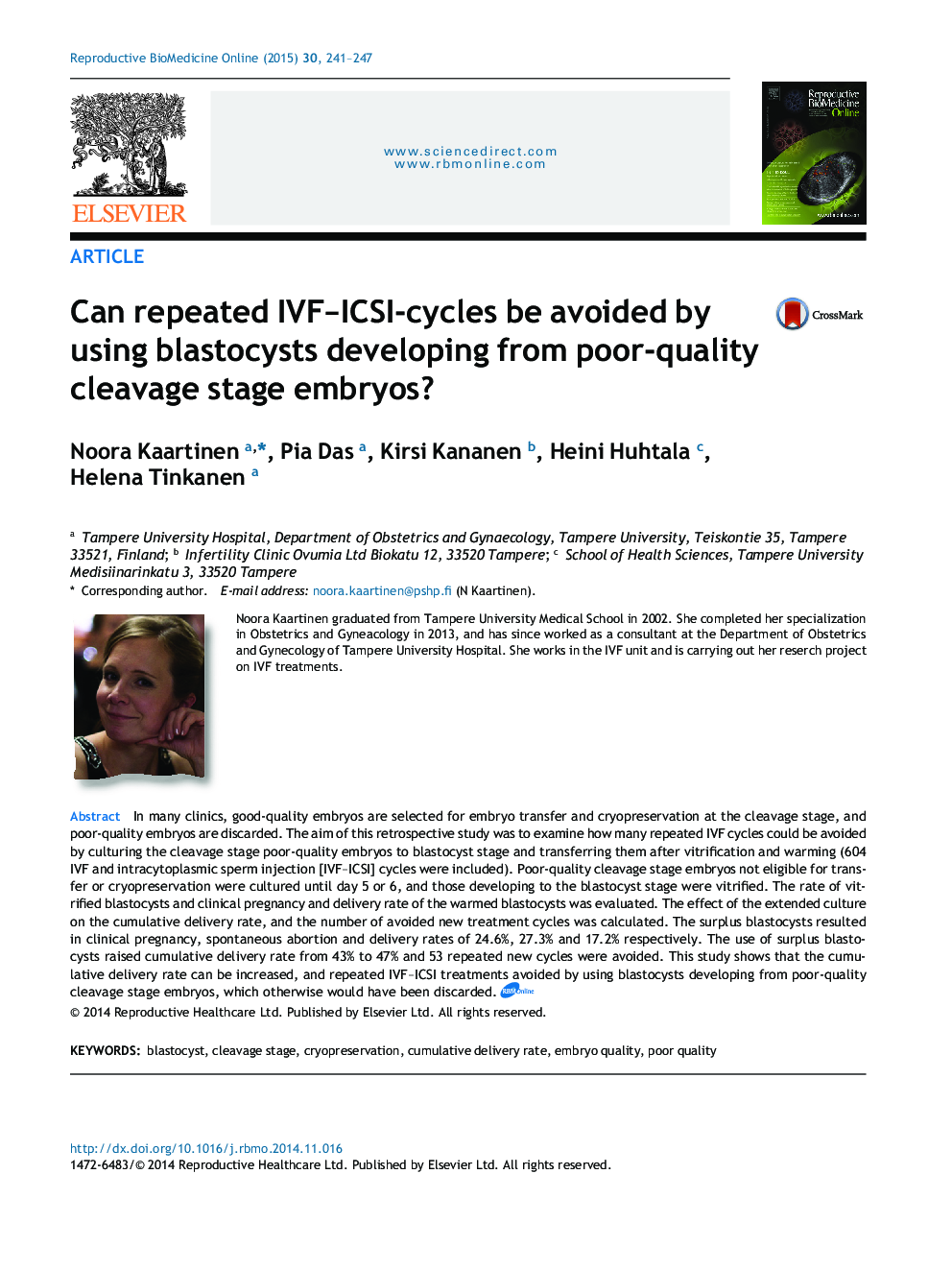| کد مقاله | کد نشریه | سال انتشار | مقاله انگلیسی | نسخه تمام متن |
|---|---|---|---|---|
| 3970101 | 1256700 | 2015 | 7 صفحه PDF | دانلود رایگان |

In many clinics, good-quality embryos are selected for embryo transfer and cryopreservation at the cleavage stage, and poor-quality embryos are discarded. The aim of this retrospective study was to examine how many repeated IVF cycles could be avoided by culturing the cleavage stage poor-quality embryos to blastocyst stage and transferring them after vitrification and warming (604 IVF and intracytoplasmic sperm injection [IVF–ICSI] cycles were included). Poor-quality cleavage stage embryos not eligible for transfer or cryopreservation were cultured until day 5 or 6, and those developing to the blastocyst stage were vitrified. The rate of vitrified blastocysts and clinical pregnancy and delivery rate of the warmed blastocysts was evaluated. The effect of the extended culture on the cumulative delivery rate, and the number of avoided new treatment cycles was calculated. The surplus blastocysts resulted in clinical pregnancy, spontaneous abortion and delivery rates of 24.6%, 27.3% and 17.2% respectively. The use of surplus blastocysts raised cumulative delivery rate from 43% to 47% and 53 repeated new cycles were avoided. This study shows that the cumulative delivery rate can be increased, and repeated IVF–ICSI treatments avoided by using blastocysts developing from poor-quality cleavage stage embryos, which otherwise would have been discarded.
Journal: Reproductive BioMedicine Online - Volume 30, Issue 3, March 2015, Pages 241–247